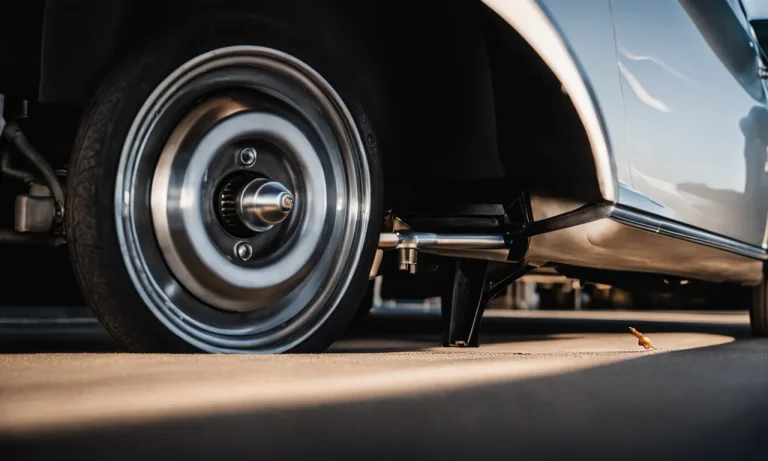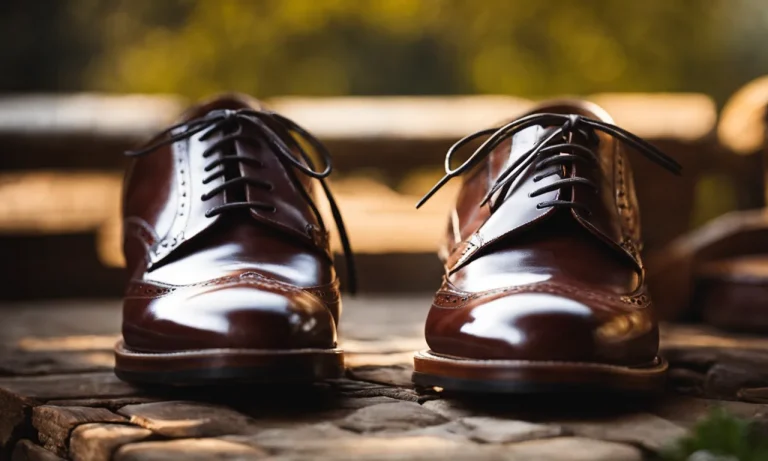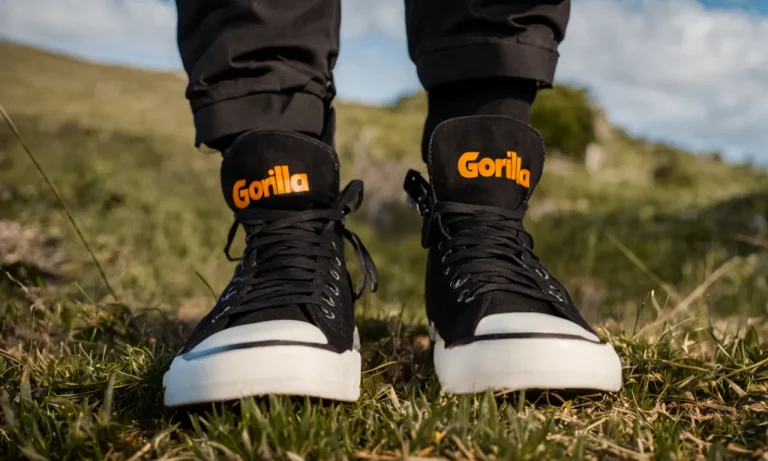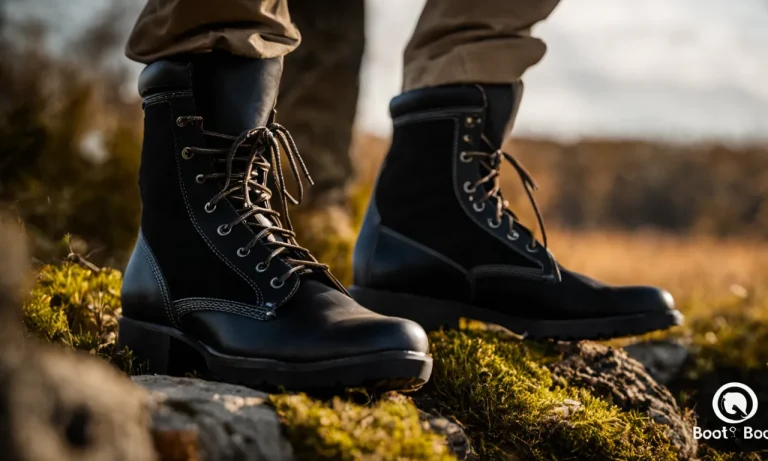Are your shoes starting to smell? UV shoe sanitizers promise to kill bacteria and odors using the power of UV light. But do they really work? Let’s take a closer look.
If you’re short on time, here’s a quick answer: UV shoe sanitizers can help reduce odors and bacteria in shoes when used properly. However, they aren’t a cure-all solution and work best when paired with other cleaning methods.
How Do UV Shoe Sanitizers Work?
UV shoe sanitizers are devices that use shortwave UV-C light to kill bacteria and fungi present on the surface of shoes. UV-C light is a type of ultraviolet light that has a wavelength range of 200 to 280 nanometers.
This specific wavelength is highly effective in destroying the DNA and RNA of microorganisms, thereby rendering them unable to reproduce and cause infections.
Uses shortwave UV-C light to kill bacteria and fungi
When UV-C light is emitted from the sanitizing device, it penetrates the cell walls of bacteria and fungi, disrupting their genetic material and preventing them from functioning properly. This process is known as germicidal irradiation.
UV shoe sanitizers typically use multiple UV-C bulbs or LEDs to ensure thorough coverage of the entire shoe surface. The light is emitted at a specific intensity and for a specific duration, which can vary depending on the brand and model of the device.
Some sanitizers also include reflective surfaces or mirrors to enhance the effectiveness of the UV-C light.
It is important to note that UV-C light is not visible to the human eye and does not leave any residue or odor on the shoes after sanitization. This makes it a convenient and efficient method for killing bacteria and fungi without the need for chemicals or heat.
Does not use chemicals or heat
One of the main advantages of UV shoe sanitizers is that they do not use any chemicals or heat. Unlike traditional disinfectants, which may contain harsh chemicals that can potentially damage the shoes or cause skin irritation, UV-C light is a chemical-free and non-toxic method of sanitization.
This is particularly beneficial for individuals who have sensitive skin or are concerned about the potential health risks associated with chemical exposure. Additionally, UV shoe sanitizers do not generate heat, which means there is no risk of damaging the shoes or causing them to warp or deform.
Furthermore, UV shoe sanitizers are often portable and easy to use. They can be used on a wide variety of shoe types, including athletic shoes, sandals, heels, and even children’s shoes. Some sanitizers are designed to accommodate multiple pairs of shoes at once, making it convenient for households with multiple members.
Benefits of UV Shoe Sanitizers
Kills odor-causing bacteria
One of the key benefits of UV shoe sanitizers is their ability to kill odor-causing bacteria. Bacteria thrive in warm and moist environments, and our shoes provide the perfect breeding ground for them. Sneakers, in particular, can accumulate sweat and dirt, leading to foul odors.
UV shoe sanitizers use ultraviolet light to destroy bacteria, preventing the growth of odor-causing microorganisms. This not only eliminates unpleasant smells but also helps to maintain better foot hygiene.
Environmentally-friendly
UV shoe sanitizers offer an environmentally-friendly alternative to chemical-based disinfectants. Traditional cleaning products often contain harsh chemicals that can be harmful to both humans and the environment.
UV sanitizers, on the other hand, use a natural and chemical-free method to kill bacteria. By harnessing the power of ultraviolet light, these sanitizers provide an eco-friendly solution for keeping your shoes clean and germ-free.
This not only benefits you but also contributes to a greener and more sustainable planet.
Portable and easy to use
UV shoe sanitizers are designed to be portable and easy to use, making them a convenient option for maintaining shoe hygiene. These devices are typically compact in size, allowing you to carry them while traveling or even keep them in your everyday bag.
Using a UV shoe sanitizer is as simple as placing your shoes inside the device and activating the UV light. The sanitizing process usually takes just a few minutes, and once complete, you can enjoy fresh and sanitized shoes.
This convenience factor makes UV shoe sanitizers a great choice for individuals who are constantly on the go.
Limitations of UV Shoe Sanitizers
Not effective on stains or dirt
While UV shoe sanitizers are effective at killing bacteria and fungi, they do have their limitations. One major limitation is that they are not effective at removing stains or dirt from shoes. UV light works by destroying the DNA and RNA of microorganisms, but it does not have the power to break down or remove physical substances like stains or dirt.
So, if your shoes have visible stains or dirt, using a UV shoe sanitizer alone will not be sufficient to clean them.
UV light cannot penetrate materials
Another limitation of UV shoe sanitizers is that UV light cannot penetrate certain materials. UV light works best on smooth, non-porous surfaces where it can reach all areas and effectively kill microorganisms.
However, if your shoes are made of materials that are opaque or have a rough texture, the UV light may not be able to penetrate deep enough to eliminate all the bacteria and fungi that may be present.
Does not eliminate odors from insoles
UV shoe sanitizers are primarily designed to kill bacteria and fungi that cause foot odor. While they may help reduce odors to some extent, they are not specifically designed to eliminate odors from insoles. Insoles can absorb sweat and bacteria over time, leading to unpleasant odors.
To effectively eliminate odors from insoles, it is recommended to use additional odor-fighting products or wash the insoles separately.
It is important to note that the effectiveness of UV shoe sanitizers may vary depending on the brand and model. Some UV shoe sanitizers may have additional features or technologies that help overcome these limitations.
It is always a good idea to read the manufacturer’s instructions and guidelines before using a UV shoe sanitizer.
Tips for Using a UV Shoe Sanitizer
Clean shoes first to remove dirt and debris
Before using a UV shoe sanitizer, it is important to clean your shoes thoroughly to remove any dirt, debris, or other substances that may be present on the surface. This will ensure that the UV light can effectively penetrate all areas of the shoe and eliminate any harmful bacteria or fungi that may be present.
Use a brush or cloth to remove any loose dirt or debris, and consider using a gentle cleaning solution if necessary.
Expose all surfaces to UV light for best results
When using a UV shoe sanitizer, it is crucial to expose all surfaces of the shoe to the UV light for the best results. This means placing the shoes in such a way that the UV light can reach all areas, including the toe box, heel, sole, and any other crevices or folds in the shoe.
Some UV shoe sanitizers come with specific instructions on how to position the shoes for optimal exposure, so be sure to follow these guidelines for the most effective sanitization.
Use in conjunction with other cleaning methods
While UV shoe sanitizers can be highly effective in eliminating bacteria and fungi, it is important to note that they should be used in conjunction with other cleaning methods. UV light is not able to remove dirt or stains from shoes, so it is still necessary to clean the shoes using traditional methods such as wiping them down with a damp cloth or using a shoe cleaning solution.
By combining UV sanitization with regular cleaning practices, you can ensure that your shoes are not only free from germs but also clean and presentable.
Remember, UV shoe sanitizers can be a valuable tool in maintaining foot hygiene, but they should not be relied upon as the sole method of cleaning and sanitizing your shoes. By following these tips and using UV shoe sanitizers as part of a comprehensive cleaning routine, you can keep your shoes clean, fresh, and free from harmful bacteria and fungi.
Conclusion
UV shoe sanitizers show promise for reducing odors and bacteria when used correctly. However, they work best as part of a comprehensive shoe cleaning routine. By pairing UV treatment with other cleaning methods, you can keep your shoes fresh and extend their lifespan.






